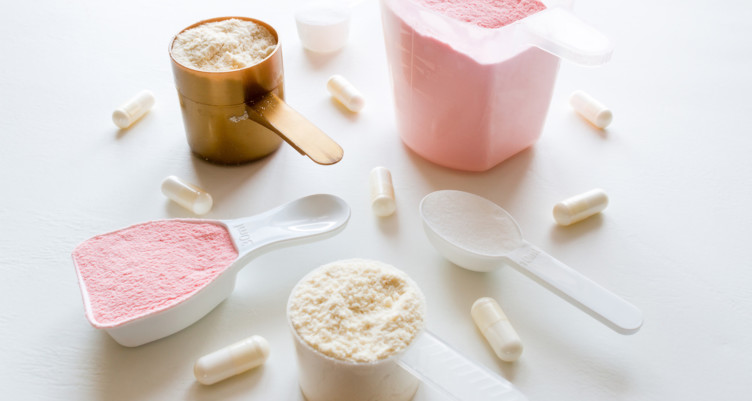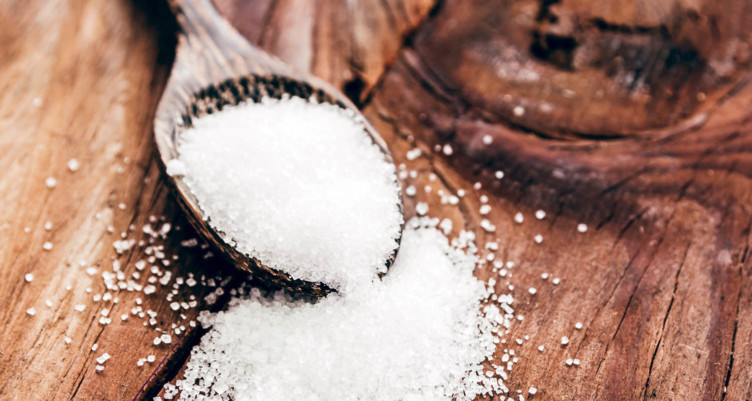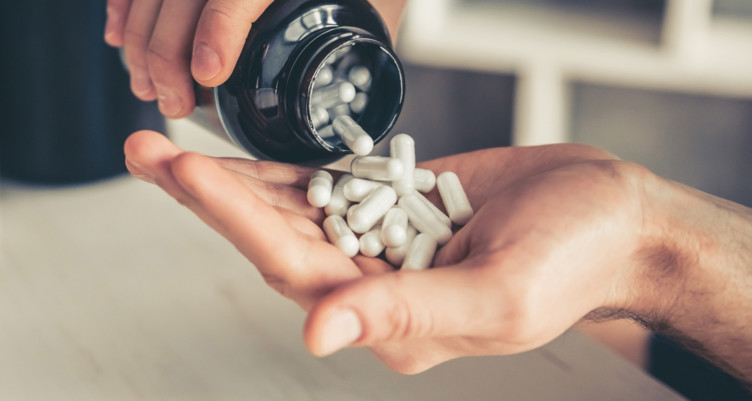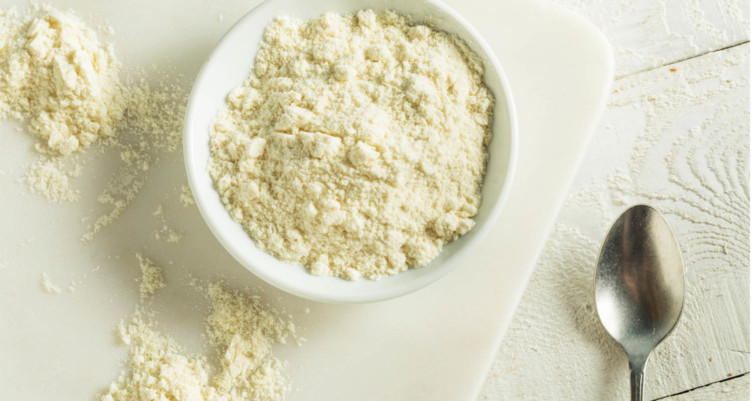6 Best Workout Supplements to Supercharge Your Training

- Learn which workout supplements have science-backed evidence to support their efficacy claims.
- Explore the workout supplements creatine, d-ribose, BCAAs, whey protein, collagen protein, PQQ and CoQ10.
- Discover how certain supplements can help you get more out of your workouts.
Whether you’re just starting a new workout routine or have been hitting the gym for a while, you might be wondering whether workout supplements can make a difference. Many products on the market today make extensive claims. What are the best workout supplements to hit your goals, and which ones are worth passing on?
Read on to learn about six science-backed supplements that can help you take your athletic performance to the next level.
Best Workout Supplements for Enhanced Training
Creatine for cell strength

Creatine has been a workout staple for decades. It’s especially popular as a workout supplement for men. But what does this workout supplement actually do?
It’s been around for so long because of creatine’s many benefits. Creatine increases adenosine triphosphate (ATP) or energy production in your muscles and recharges them while you rest.[1] In other words, it may give you more power in your workout before you slow down and switch to using oxygen for fuel.
Creatine also stimulates protein synthesis, which may help you build muscle much faster. Pairing creatine with a resistance-training workout has shown significant increases in lean muscle mass and strength.[2] Plus, creatine may have a nootropic effect by supporting short-term memory when taken orally.[3]
The original and best-studied form of creatine is called creatine monohydrate. It’s effective once you get it to a high enough concentration in your muscles.
There are generally two approaches to taking creatine. The first involves taking a higher dose (for example, 20 g/day for 6 days) for a shorter period. This is called a “loading” phase.
The second suggests taking a lower dose for about a month (around 3 g/day for 28 days). According to a recent evidence-based scientific evaluation of existing literature on creatine supplementation, both strategies offer similar results.[4]
So why would you choose one over the other? If you’re an athlete looking to maximize the benefits of creatine over a short period of time, the “loading” approach could be better. However, if you’re planning on taking creatine for more than a month, taking a lower dose could be easier for your body to ease into, especially if you’re trying it for the first time.
If you decide to go through with the loading phase, make sure to drink lots of water during your workout. Your training may be more vigorous than usual, which could lead to more sweating.
Another type of creatine on the market is creatine nitrate. It combines creatine with nitric acid. What’s the difference between creatine nitrate and monohydrate? In short, the difference is its molecule structure. Creatine nitrate has a nitrate group, and creative monohydrate has a water molecule. Creatine nitrate is more soluble, but not more potent than creatine monohydrate.
However, there isn’t as much scientific research on creatine nitrate as creatine monohydrate since it is a newer formulation. A recent study found that combining creatine nitrate with creatinine seemed more effective than creatine monohydrate alone, but longer-term studies are needed to support these claims.[5]
And finally, creatine is better stored by your muscles if you pair it with glucose.[6] It’s like stocking up on energy reserves in your muscles for when you need them during your workout. Try pairing your dose of creatine with a quarter of a teaspoon of raw honey.
Creatine monohydrate suggested dose:[7]
- For loading phase: 20g/day (5g 4 times daily) for six days, then 5g/day to maintain.For a more gradual approach: 3 g/day for 28 days.
When to take it:
- For loading phase: throughout the day For a more gradual approach: in the morning
D-ribose for energy production

D-ribose might be the most Bulletproof member of the sugar family. It has a maple-like sweetness to it, but because it contains 5 carbons instead of the 6 found in table sugar, ribose doesn’t raise your blood glucose.
It does, however, help with your energy production. Ribose is a critical component of ATP, the molecule that stores energy in your cells. Exercise empties your ATP and ribose may help to fill them back up more quickly, decreasing muscle soreness and speeding up recovery time after you work out.[8] Ribose also enhances overall mitochondrial function, which is essential in energy production9. Try using it to sweeten your coffee.
A quick word of caution: unlike most sugars, ribose lowers your blood glucose10. If you’re prone to hypoglycemia, take your ribose with meals to counter the effect, and don’t take more than 10g at a time.
Suggested dose:
- 5g/day
When to take it:
- 1 hour before you work out
PQQ and CoQ10 for increased energy

Combining pyrroloquinoline quinone (PQQ) and coenzyme Q10 (CoQ10) creates higher-functioning mitochondria,[9] which means more energy for every cell in your body. When your mitochondria increase your energy output, you may feel improved mental endurance and muscular strength.
In clinical studies, PPQ was shown to support cognitive health in older adults.[10] It has a soothing effect on the body, which has been linked to supporting some health-related issues. Plus, topical PQQ may improve mitochondrial function in human skin cells, protecting skin from UV radiation and supporting graceful aging.[11]
However, PQQ does not have great bioavailability. That means it may be challenging to get through your digestive system and bloodstream, and into your mitochondria.
Suggested dose:
- 100 milligrams of CoQ10
- 10 milligrams of PQQ
When to take it:
- 1 hour before you work out
Favorite PQQ and CoQ10 supplement:
Branched-chain amino acids (BCAAs) for faster recovery

BCAA supplements contain the amino acids isoleucine, leucine and valine.
There are many BCAA workout supplements on the market, all with various claims. Some of the stated benefits of BCAA include reducing soreness, enhancing endurance, increasing muscle mass and even supporting cognitive function. However, there is currently not enough scientific research to support these claims.
A recent study on the effects of BCAA indicates that the supplement has a negligible effect on muscle recovery.[12] However, many participants in the research did perceive to have decreased muscle soreness after completing the strenuous workout routine.
BCAA powder has a bitter taste, and to counter that, many manufacturers add artificial sweeteners and dissolving agents to the formula. If you decide to try it, check the label to avoid products that contain artificial sweeteners like aspartame, acesulfame potassium (ace-K) and sucralose. You can also take it in capsule form.
Suggested dose:
- 5g
When to take it:
- We suggest, one dose before you work out, one dose after
Whey protein and colostrum to build muscle

Whey protein has been extensively reviewed in scientific studies and is often used by athletes to enhance their performance and speed up recovery time.[13]
Whey protein may support gains in strength and muscle mass when paired with resistance training.[14] It increases muscle synthesis, more so than some other proteins. However, soy or pea protein are great alternatives if you are following a plant-based diet.
Like BCAAs, commercial whey formulations often contain fillers and sweeteners. Look for whey from 100% grass-fed cows that have never been exposed to hormones, antibiotics, or pesticides.
You can also boost the effects of whey using grass-fed colostrum, the nutrient cows feed their newborns in the four to five days post-birth. Bovine colostrum offers a host of benefits for athletes, including immune support that may be effective against health-related concerns caused by intense exercise.[15]
Suggested dose:
- 10-15g
When to take it:
- Within an hour after exercise
Collagen protein to support flexible joints

Collagen plays an important role for your entire body. This protein contains amino acid building blocks to support hydrated skin, flexible joints and strong bones, amongst many other functions.[16]
Whether you’re a powerlifter or a morning jogger, exercise stresses your body and joints. When you take a collagen protein supplement, you give your body extra amino acids to support the additional exertion. Healthier joints help with mobility, which may increase your range of motion and allow you to get more movement out of each rep.
Collagen contains eight out of the nine essential amino acids, as well as glycine, proline and hydroxyproline. Unless you regularly eat bone broth and organ meat, these amino acids are scarce in the standard American diet. That’s why collagen protein supplements are so beneficial. Look for hydrolyzed collagen peptides. “Hydrolyzed” means the collagen has been broken down so it’s easier to digest.
Adding collagen protein to your post-workout recovery stack is an easy way to support your recovery.[17]
Suggested dose:
- 10-20g collagen
When to take it:
- Before or after your workout
Favorite collagen supplement:
It’s important to remember that while supplements can play a role in optimizing your workouts, they are not a magic solution. The foundation of any successful fitness journey should always be a balanced diet, regular exercise, and adequate rest. Supplements are a tool to complement these foundational elements.
Plus, not all supplements work the same for everyone. The best workout supplements for one person may have limited benefits for you. Listen to your body, track your progress, and adjust your supplement regimen as needed.
Sign up for early access to sales, product launches, the latest Bulletproof news and more!
This is an updated version of an article originally published July 2019.



